Massimo De Carlo gallery unveils Paris outpost by Kengo Kuma
Intended for single-work exhibitions, Massimo De Carlo Pièce Unique is small, minimal, yet ambitious, proposing a new exhibition model that emphasises the connection between viewer and artwork
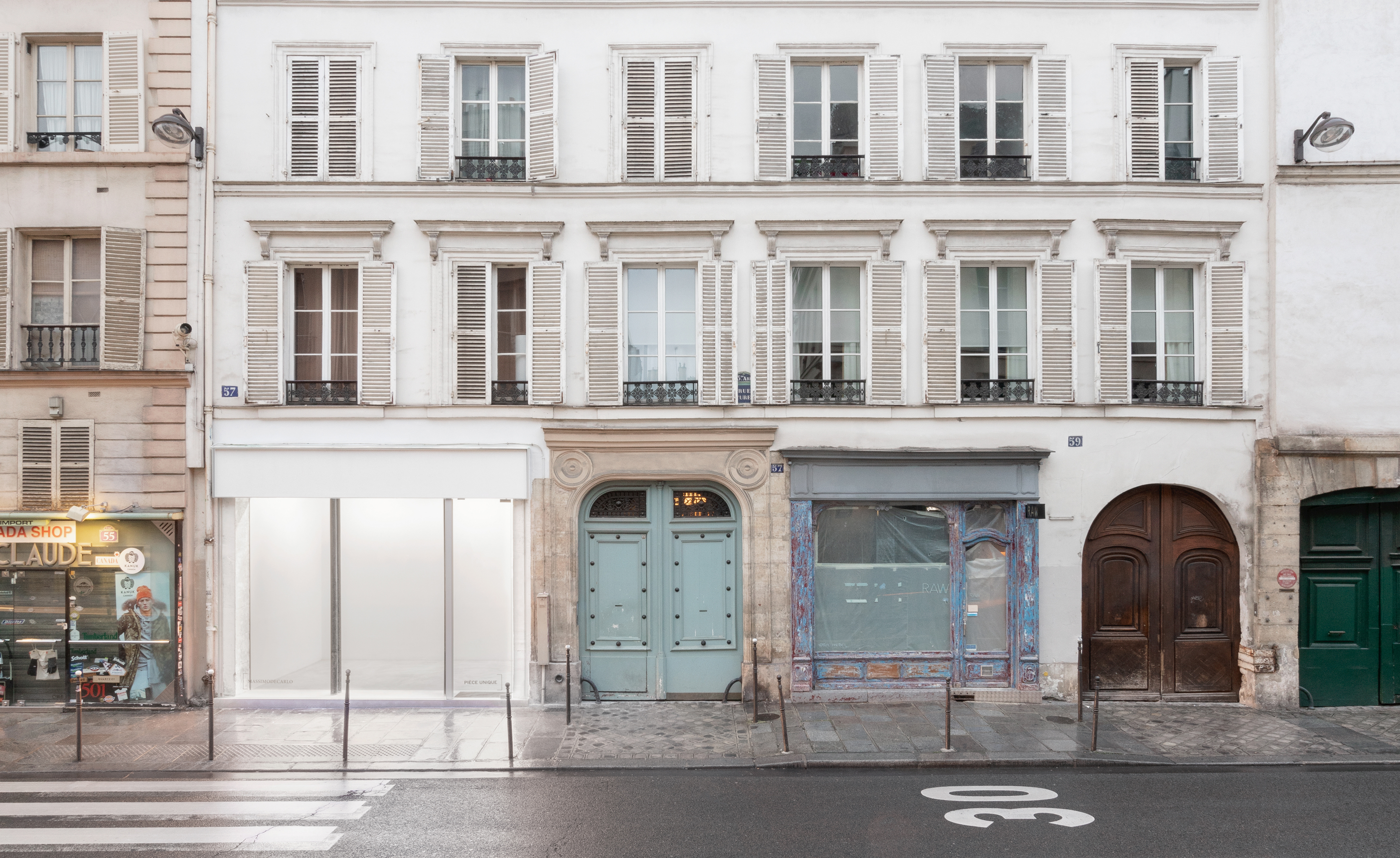
Massimo De Carlo Pièce Unique may be tiny, but it’s ambitious in concept. Located in the Marais, and breaking with the local tradition of hiding top galleries within enclosed courtyards, this first Parisian space of the influential Italian gallerist is scheduled to open to the public on 9 February. Unusually, it will only present a single art piece at a time.
Pièce Unique is ‘small by choice, in favour of the quality of the programme’, says gallerist Massimo De Carlo. ‘Art is always about ideas, never about scale. My desire was to question the true nature of a gallery, challenge the art system, and give artists a possibility to enhance new conversations between their work and the viewers. Its dynamic environment will give me – and more importantly, the artists – the chance to operate in a radically different way from the usual gallery exhibitions.’

The branding of Massimo de Carlo Pièce Unique is deliberately minimal, better to focus attention on the artwork that will be on display.
The philosophy is echoed in the space’s understated design by Kengo Kuma, who worked hand-in-hand with London-based studio PiM (Maria-Chiara Piccinelli and Maurizio Mucciola). The renowned Japanese architect – whose latest projects include the Japan National Stadium, which international audiences will hopefully get to discover this summer for the Tokyo Olympic Games – was also willing to strip back and switch scales. ‘Our idea was to introduce as little as possible in terms of design elements, so the focus remains on the exhibited artwork,’ says Kuma, showing a respect for heritage that is characteristic of Japanese culture.
We wanted to show the true essence of the existing materials of the historic building in their original roughness.
De Carlo was drawn to the architect’s reverent approach. ‘I felt the light and elegant Japanese touch of Kengo Kuma would be perfectly consistent with the nature of the project, for which the small detailing and the choice of materials are so important. The relationship we built was very meaningful,’ says De Carlo from Milan, where he has two large gallery spaces.
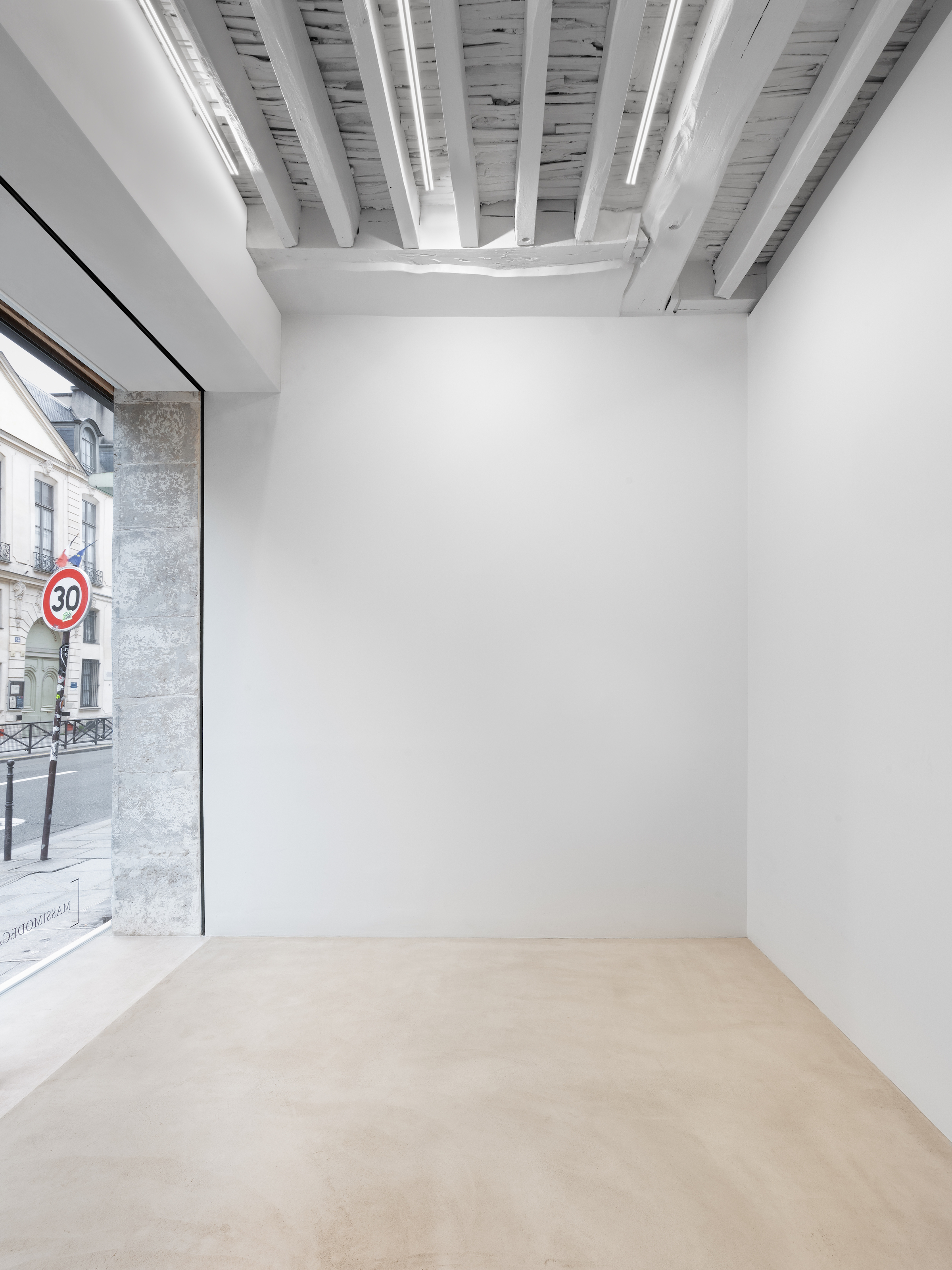
The compact space is intended to display one artwork at a time. Kuma left the wood of the ceiling is exposed to highlight the building's heritage, while installing a richly textured clay floor.
RELATED STORY
With Kuma directing the project remotely from Tokyo, his team carefully removed the plaster covering the space’s Lutetian limestone wall and wooden beams, to reveal the surfaces in their weathered beauty. As a calming counterpoint, the floor remains smooth, covered with beige clay and seamlessly connected to the wall by limestone skirting. The façade is a simple glazed vitrine, ‘to recreate the transparency of the shop window and maximise the visibility of the gallery’s interior from the street’, explains the architect. Above the window hangs a rectangular sign with a black frame, its white surface left intentionally blank.
Although the show can be appreciated from the street, perfect for the era of social distancing, it’s worth stepping inside to visit the office area, located just behind the white plywood wall which serves as a backdrop for the art piece on show. There stands a custom reception desk crafted from rough limestone, a piece that Kuma is particularly proud of. It commands the space like a huge block of nougat, sliced smoothly at the top – as if laser-cut – and then sealed with resin. On the left, a minimal and smartly functional shelf was also specially designed by the architect.
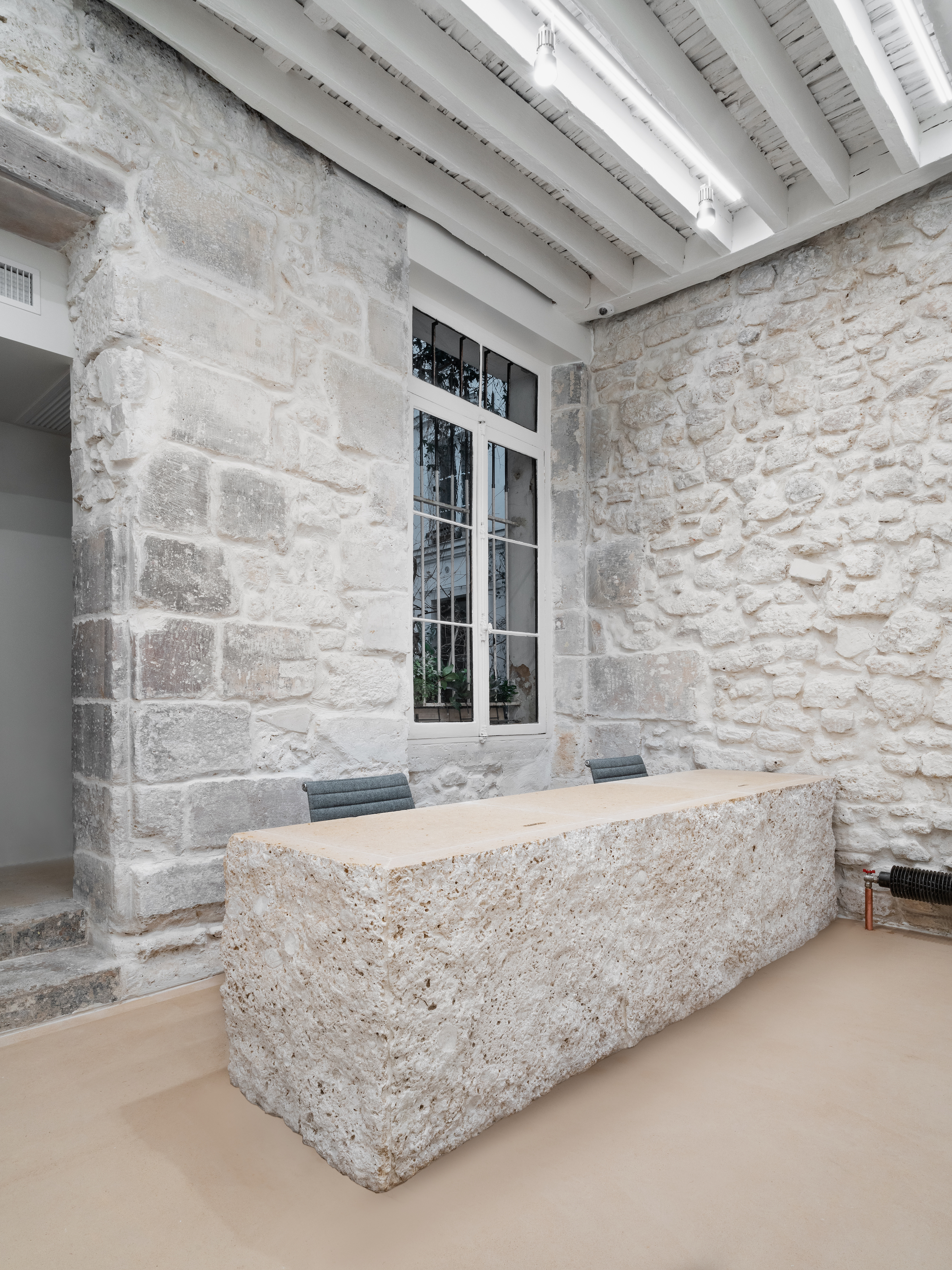
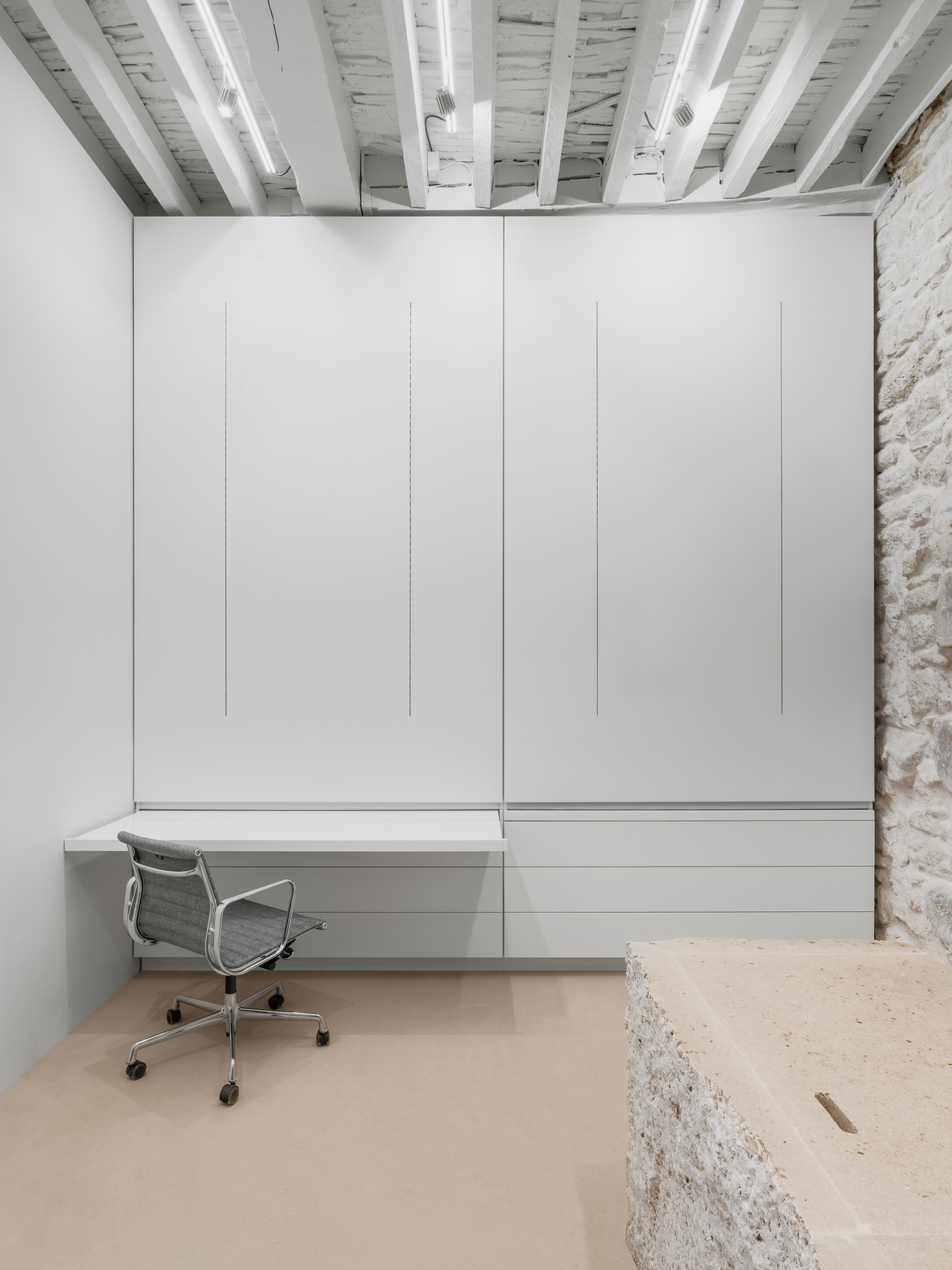
Above: Kuma's custom reception desk for the gallery, made from Parisian stone and with deliberately rough surfaces that call to mind a huge nougat. Below: the office space in the gallery.
The inaugural show of Massimo De Carlo Pièce Unique comprises a new work titled Clay Baby (m.l.) by Kaari Upson, whose work reveals intimate inner worlds and fits perfectly with the gallery’s vision, says De Carlo. As for future shows, ‘experimentation shall always remain at the core of everything that we do, as the best artists always teach us’, he adds.
A post shared by MASSIMODECARLO Pièce Unique (@massimodecarlopieceunique)
A photo posted by on
Photographed in 1989, the original Galerie Pièce Unique in Saint-Germain-des-Prés, with window concept and design by Cy Twombly
INFORMATION
Receive our daily digest of inspiration, escapism and design stories from around the world direct to your inbox.
Massimo De Carlo Pièce Unique opens on 9 February 2021 with Kaari Upson’s Clay Baby (m.l.)
57 Rue de Turenne, Paris 3e; @massimodecarlopieceunique
Minako Norimatsu is a Japanese journalist and consultant based in Paris. Extremely curious about everything creative, her field ranges from fashion to art, dance, hospitality and travel. She has interviewed many Japanese fashion designers and artists for Wallpaper*, as well as non-Japanese creatives whose inspirations are drawn from Japan.
-
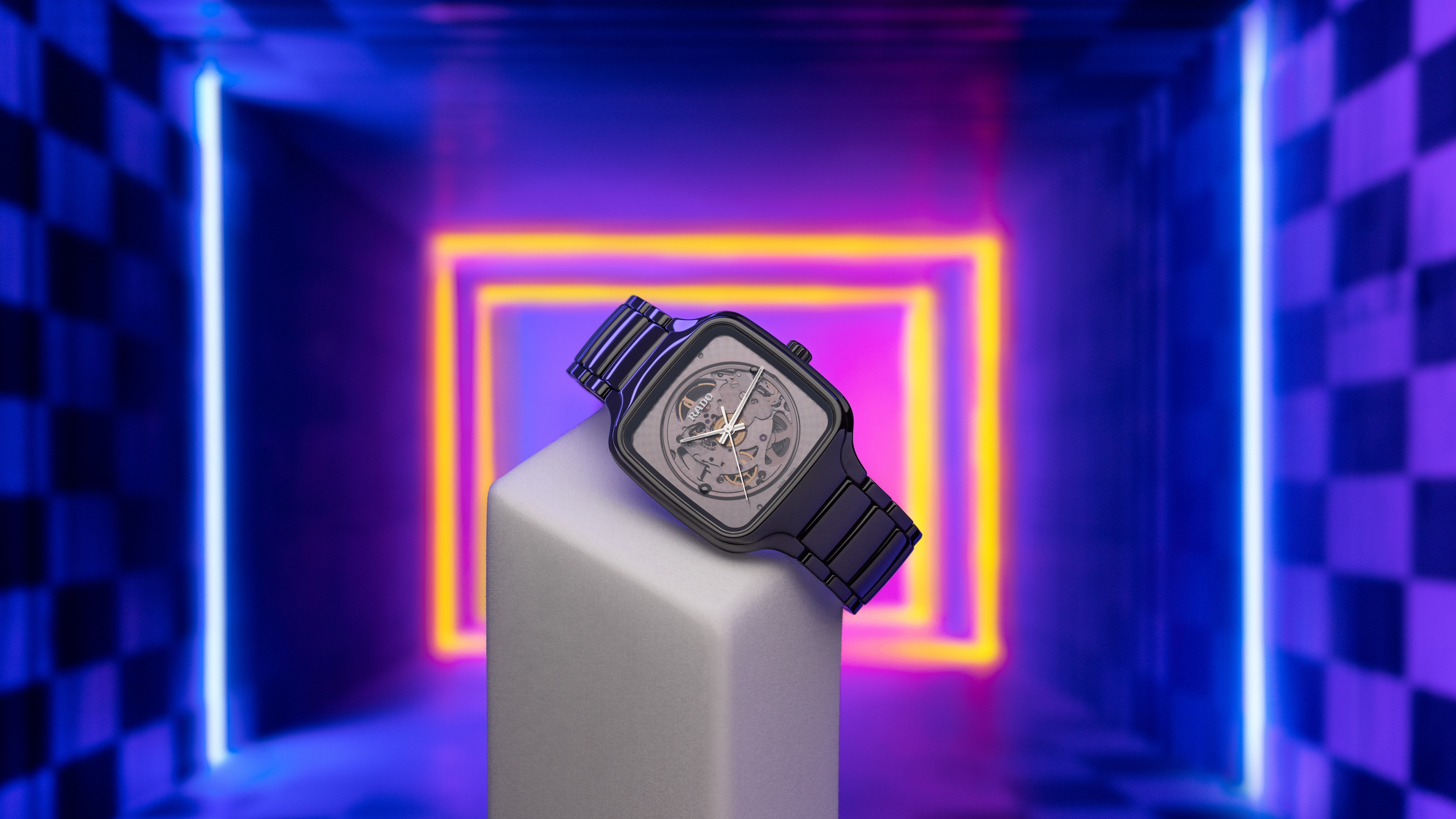 Why are the most memorable watch designers increasingly from outside the industry?
Why are the most memorable watch designers increasingly from outside the industry?Many of the most striking and influential watches of the 21st century have been designed by those outside of the industry’s mainstream. Is it only through the hiring of external designers that watch aesthetics really move on?
-
 This Fukasawa house is a contemporary take on the traditional wooden architecture of Japan
This Fukasawa house is a contemporary take on the traditional wooden architecture of JapanDesigned by MIDW, a house nestled in the south-west Tokyo district features contrasting spaces united by the calming rhythm of structural timber beams
-
 At last: a London hotel that’s great for groups and extended stays
At last: a London hotel that’s great for groups and extended staysThe July London Victoria, a new aparthotel concept just steps away from one of the city's busiest rail stations, is perfect for weekends and long-term visits alike
-
 Inez & Vinoodh unveil romantic new photography series in Paris
Inez & Vinoodh unveil romantic new photography series in ParisA series of portraits of couple Charles Matadin and Natalie Brumley, created using an iPhone in Marfa, Texas, goes on show in Paris
-
 Inside Davé, Polaroids from a little-known Paris hotspot where the A-list played
Inside Davé, Polaroids from a little-known Paris hotspot where the A-list playedChinese restaurant Davé drew in A-list celebrities for three decades. What happened behind closed doors? A new book of Polaroids looks back
-
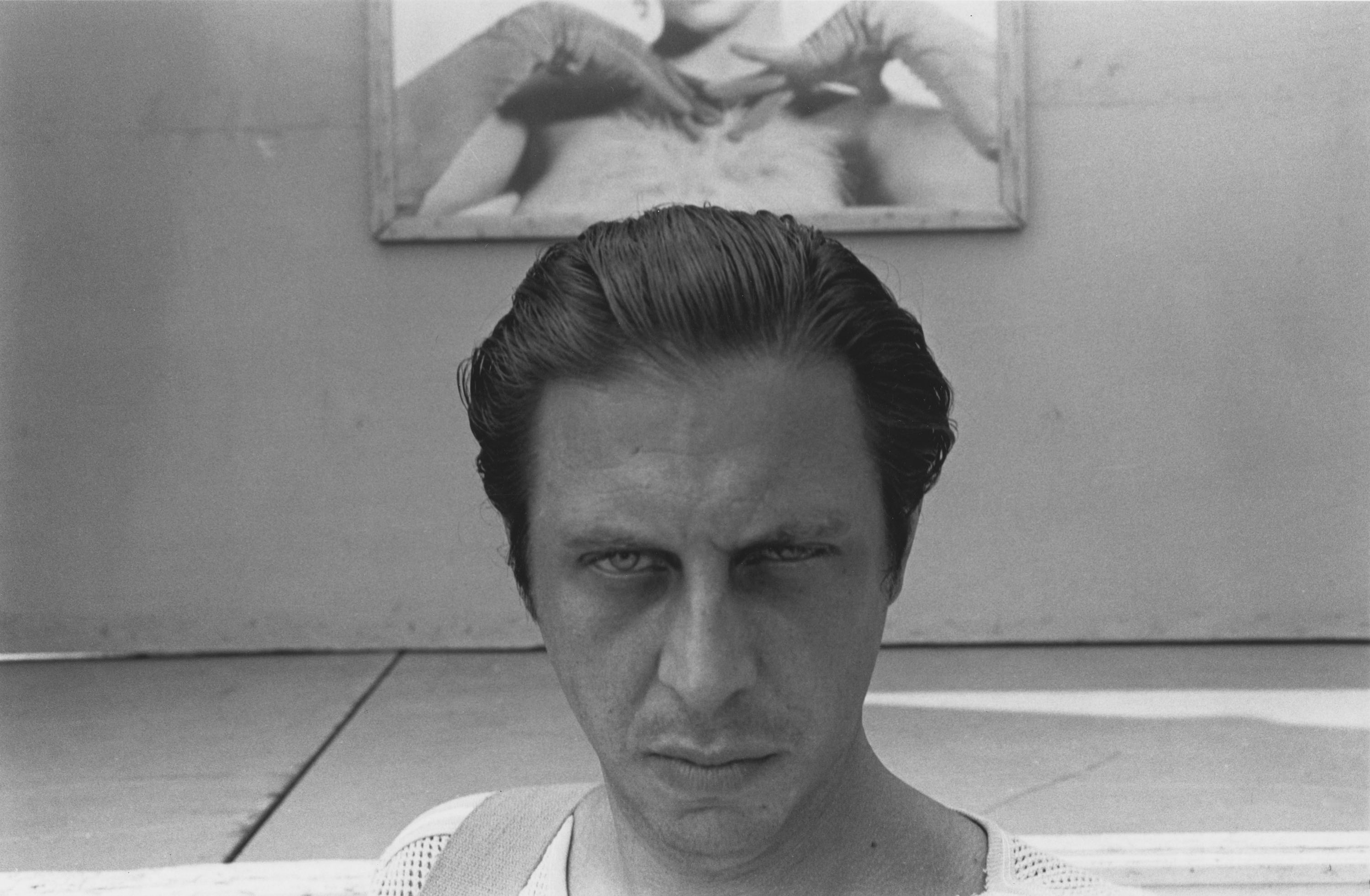 All eyes on Paris Photo 2025 – focus on our highlights
All eyes on Paris Photo 2025 – focus on our highlightsThe world's most important international photography fair brings together iconic and emerging names, galleries large and small – and there’s much to covet
-
 Ten things to see and do at Art Basel Paris 2025
Ten things to see and do at Art Basel Paris 2025Art Basel Paris takes over the city from 24-26 October. Here are the highlights, from Elmgreen & Dragset to Barbara Kruger and Dash Snow
-
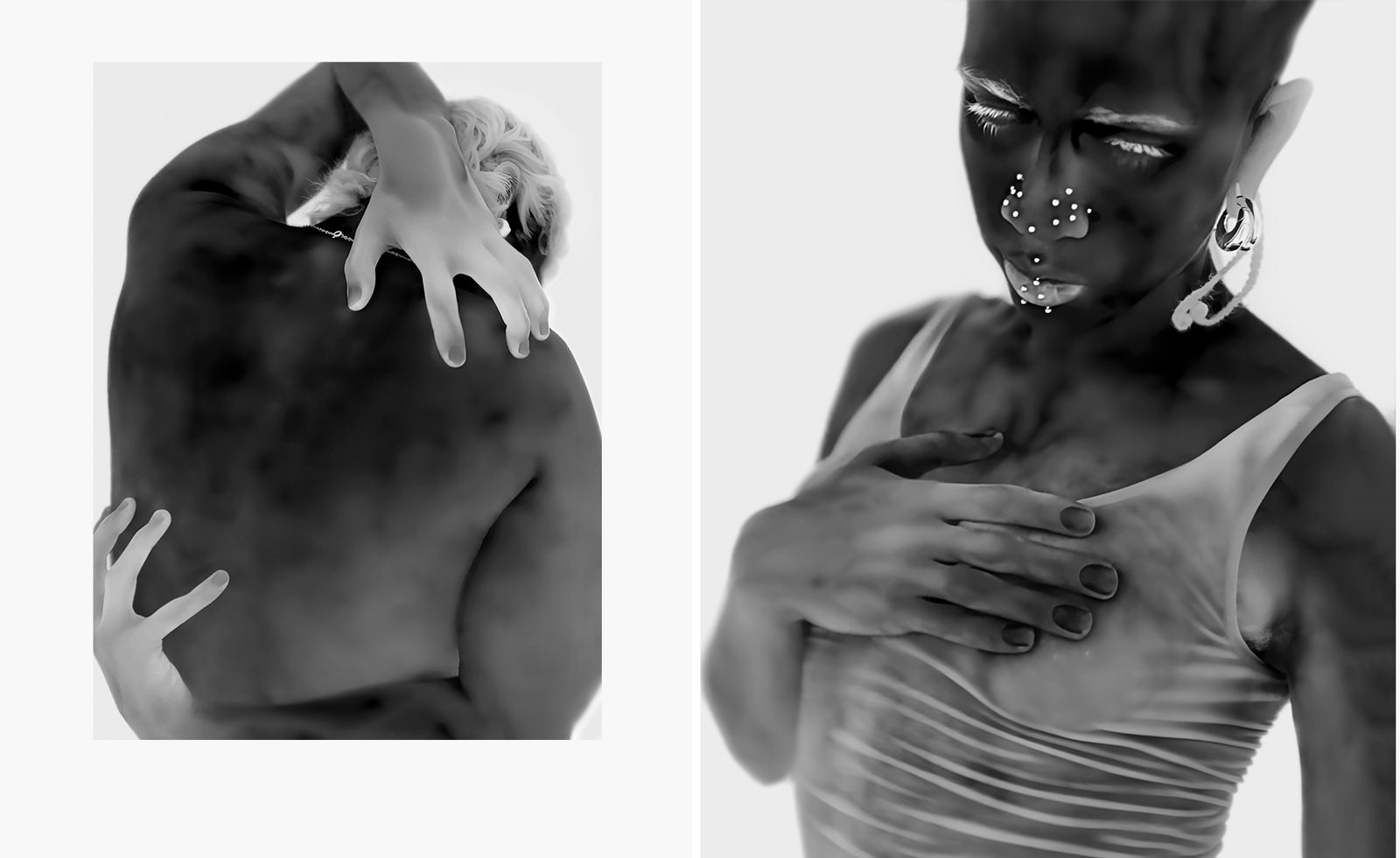 Yulia Mahr digs beneath the skin in her modern update of classic Greek statues in Paris
Yulia Mahr digs beneath the skin in her modern update of classic Greek statues in ParisIn 'The Church of Our Becoming', on view at the Courtyard at Dover Street Market Paris, Yulia Mahr celebrates real human bodies
-
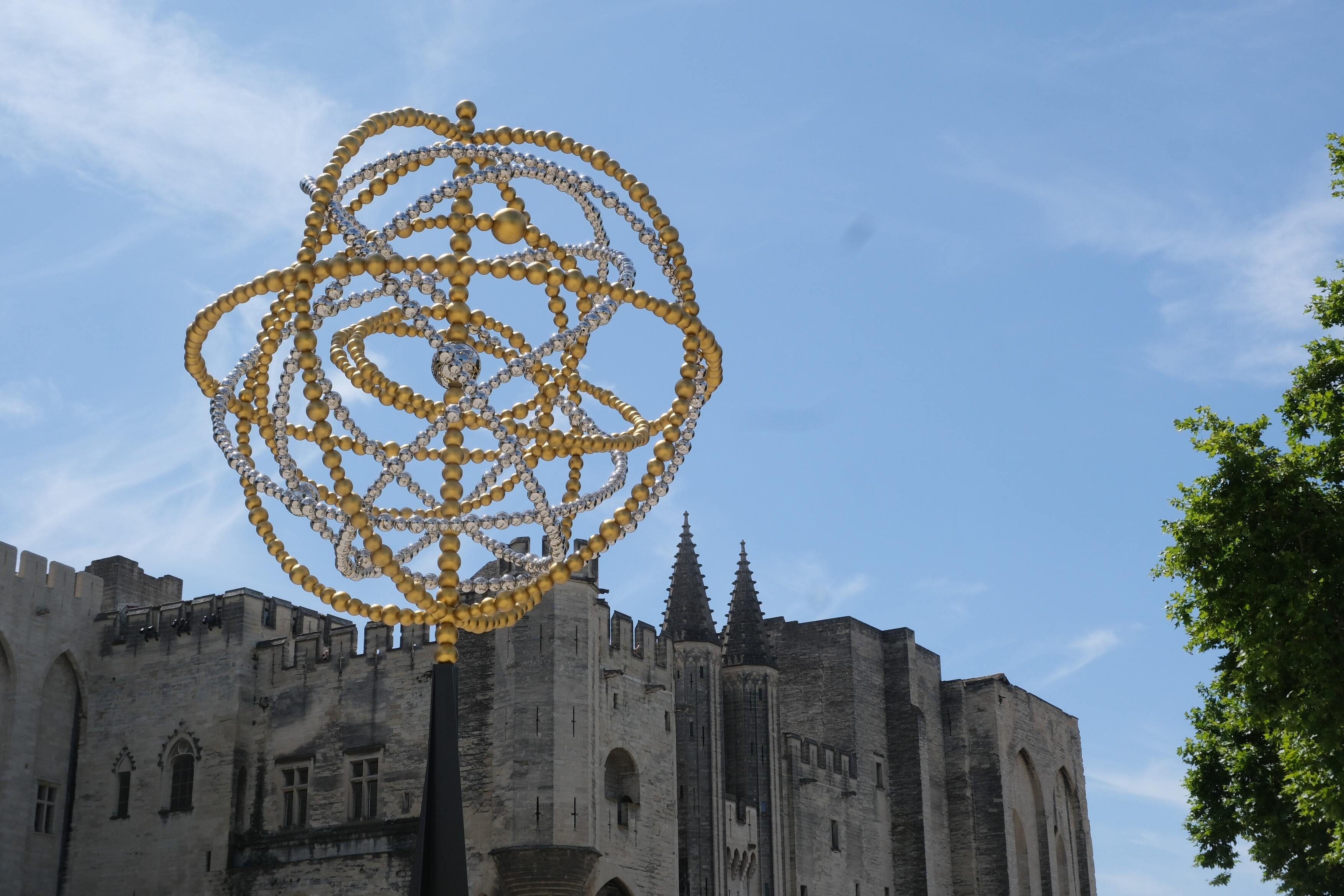 Jean-Michel Othoniel takes over Avignon for his biggest ever exhibition
Jean-Michel Othoniel takes over Avignon for his biggest ever exhibitionOriginally approached by Avignon to mark their 25th anniversary as the European Capital of Culture, Jean-Michel Othoniel more than rose to the challenge, installing 270 artworks around the city
-
 Joel Quayson’s winning work for Dior Beauty at Arles considers the theme ‘Face-to-Face’ – watch it here
Joel Quayson’s winning work for Dior Beauty at Arles considers the theme ‘Face-to-Face’ – watch it hereQuayson, who has won the 2025 Dior Photography and Visual Arts Award for Young Talents at Arles, imbues his winning work with a raw intimacy
-
 What to see at Rencontres d’Arles 2025, questioning power structures in the state and family
What to see at Rencontres d’Arles 2025, questioning power structures in the state and familySuppressed memories resurface in sharply considered photography at Rencontres d'Arles 2025. Here are some standout photographers to see
